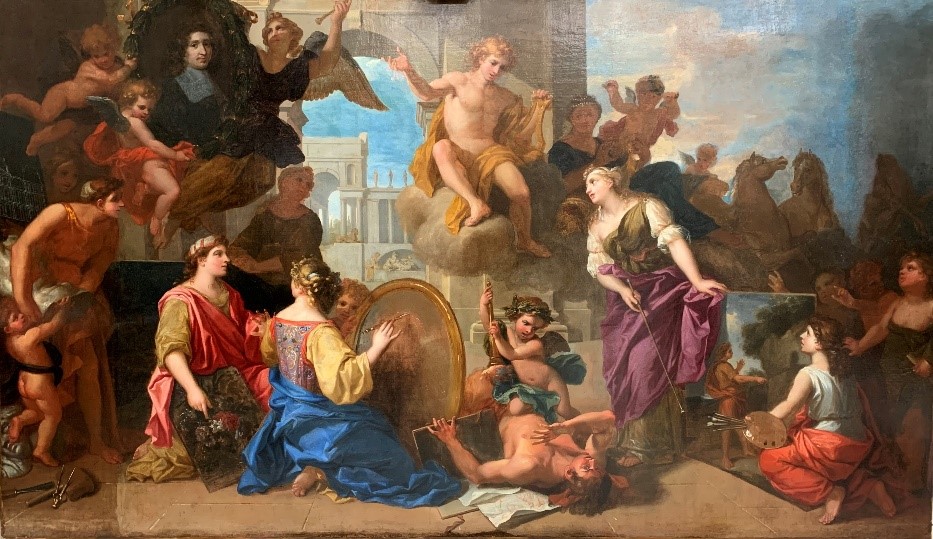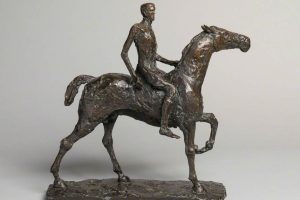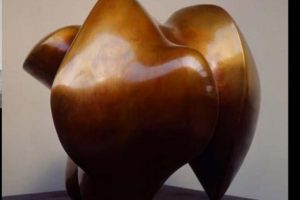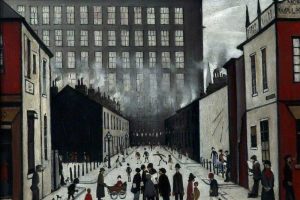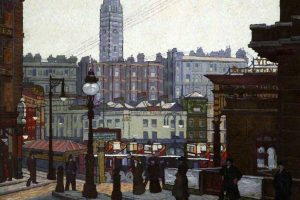The Triumph of Art (Until Saturday 12 December 2020)
Don’t miss the opportunity to visit the stunning, newly restored, painting The Triumph of Art by Nicholas Pierre Loir (1624–1679). The exhibition features artworks from The Atkinson’s permanent collection and reflects the art forms portrayed in The Triumph of Art. Key works on display include sculptures by Elisabeth Frink and Henry Moore, and paintings by LS Lowry and Charles Ginner.
Visit Mon-Sat. 11am-4pm. Free Entry.
View all exhibitions online here.
-
The General (1956) by Elisabeth Frink (1930 – 1983) (Oil on board)
Frink said that the ‘The General’ was ‘really a satirical piece on some aspects of leadership – it’s a rather flamboyant person on a horse, a send-up of generals.’
Purchased with assistance from the Victoria and Albert Museum Purchase Grant Fund, 1982
-
Three Way Piece: Points (1966) by Henry Moore (1898 – 1986) (Bronze)
This sculpture by Moore is entirely abstract although it was inspired by a flintstone with three points touching the ground. Moore wrote that the sculpture ‘was an attempt to show one work from below as well as from on top and from the side. My idea was to make a new kind of sculpture, less dependent on gravity, which could be seen in at least three positions and be effective in all of them…’
Donated by the Friends of the Atkinson Art Gallery
-
Street Scene (1935)
Laurence Stephen Lowry (1887 – 1976) (Oil on Canvas)
Lowry lived in Station Road, Pendlebury from about 1912 to 1948; this is a view of nearby George Street with the imposing Acme Mill rising claustrophobically in the background. When Lowry saw the mill in 1916, dwarfing the millworkers’ cottages, it was a moment of revelation. That was the moment when he decided to concentrate on painting the northern industrial landscape.
Purchased in 1939.
-
A Sunlit Square, Victoria Station (1913) by Charles Ginner ARA (1878 – 1952) (Oil on Canvas)
The shadowed figures and buildings in the foreground frame the view of this sunny square giving a convincing contre-jour effect. Ginner’s work is characterised by intense colour, inspired by Van Gogh’s art, but applied with carefully controlled, mosaic-like dabs of colour.
Ginner was one of the Camden Town Group of artists who illustrated modern London life. The Camden Town Group responded to the visual excitement and variety of the city. Ginner specialized in painting crowded cityscapes. He had worked for three years in an architect’s office in Paris and found beauty in the ordinary, unidealized urban landscape.
Ref: 1329/B29. Gift of the Contemporary Art Society.
Posted on 7 December 2020 under General news




